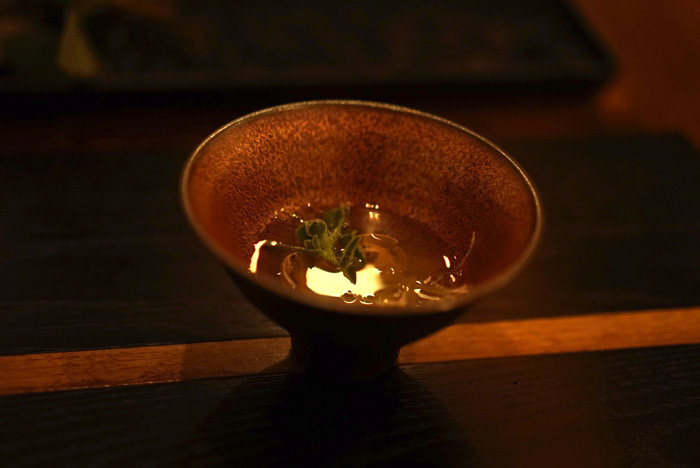My girlfriend kept harping on about this show called Chef’s Table on Netflix, and insisting as an artist I would find it interesting.
I was reluctant at first, because well, are chefs like artists? And also, I’ve never been able to understand the recent wave of cooking shows. When you think of the number of hungry people, I thought it all in pretty poor taste; kinda tough to swallow, or hard to stomach. ;)
But as it turns out, Chef’s Table is about the chefs themselves, and their “journeys” for lack of a better word. And it is surprising the parallels between the life of a chef and that of an artist. This might not be surprising to some of you… it is called the “culinary arts” after all. But I went to art school, and there were no culinary skills taught, believe me!
To start with, one of the hallmarks of an artist is individuality, and the chefs in this show are no different. The personalities, cuisines, cultures and approach are as varied as a modern art fair. Variety is the spice of life, they say.
Another alarming parallel is chefs and artists seem to name their creations with word play and puns. In the episode featuring Will Goldfarb, we were taken to his dessert bar ‘Room 4 Dessert” with such dishes as ‘Pandan-bert’. I’ve come up with some groaners for my own work, but chefs truly take the cake! ;)
The chefs exposed are not necessarily on the gravy train, but they are the cream of the crop. Cherry-picked. Some are the avant-garde of food, taking molecular gastronomy to the next level… often employing “food labs” which are kitchens dedicated to experimentation. Methinks this is much the same as an artist’s studio… where hours are spent, mistakes and discoveries made. Chefs on the show create organic bubbles of flavour inside algae skins, foams and flosses of unconventional flavours. It’s a similar kind of innovation that I see with painters who use gels, fluid acrylics, paint skins, and artists in general who push the limits of the materials in their given medium. If you were to look into a modern studio and a modern kitchen/lab, you’d find tools that wouldn’t be traditionally be found in either. Blow torches, industrial moulds, plastics and dry ice, for example.
Artists long ago escaped the confines of the square canvas, and chefs are no longer bound by a round white plate. Grant Achatz at his restaurant Alinea, (whom, on a side note, often visits contemporary art galleries for inspiration for his dishes), serves food on pillows of scented air. And in the ephemera, there’s Vladimir Mukhin’s White Rabbit restaurant in Moscow, which aims to create an overall experience much like an installation artwork.
There is a definite familiarity with chefs’ obsession with… well, familiarity. Nostalgia and childhood features throughout the series. Notably, and one of the strongest episodes, was Christina Tosi: a New Yorker who invented cornflake milk ice-cream. You know, that flavoured milk left over after a bowl of cornflakes? I thought that was quite brilliant! You don’t have to look far in the art world to see that “flavour” of nostalgia, from Chardin’s ‘Boy with a Top’ to Jeff Koons’ ballon dogs. I guess it alludes to an overall occupation with childhood (some of us have even been accused of painting like one). And I think too, it’s important for innovation to approach our work with a notion of “play”… if not in concept, then in the creative process.
Another memorable episode featured Francis Mallman who lived and cooked on a seriously remote and wild Patagonian island. Along with Jeong Kwan, a Buddhist nun of the Baegyangsa temple in South Korea, these two chefs are all about immersion with their natural surrounds. Mallman is primeval in the connection to his surrounds, and Kwan spiritual, and the episode leaves you with same feeling you get after a week-long meditation retreat. For me, and I hear it from other artists too (especially those in cities), it highlights our dissonant need to be a part of the human city machine, and the desire to be out and grounded in nature.
This blog post probably has enough on its plate, but it wouldn’t be right not to touch on the effect of patriarchy on the cheffing and art worlds. In the first season of Chef’s Table, there is just one female chef featured. The woman I speak of is Niki Nakamara, and all she had to do to be on the show was train in Japan for decades in the uber-male dominated world of Kaiseki, realise there was never going to be much opportunity there, move to Los Angeles, start her own restaurant, and become one of the top Kaiseki chefs in the world. Hopefully you can detect my snark here, but of course, this lack of equality is a reflection on the world of elite chefs more than on Chef’s Table, who to their credit, made more of a concerted effort to represent equally in following seasons.
Similarly, women have long been fighting for equal representation in major museums, or to in general be taken seriously as artists. This is not easy given the “artistic genius” label that has a long history of being given to only men, leaving society with an inherited (mostly) unconscious bias. There are signs things are changing, with projects such as The Jealous Curator’s book ‘A Big Important Art Book - Now With Women’, The Other Art Fair London’s ‘Not 30%’, and revisionist history documentaries like ‘Kusama, Infinity’.
In a nutshell, the life of a chef is far closer to that of an artist than I thought. Granted, I can see that is a rather glorifying statement given cheffing is a pretty hard slog. It’s long hours, split shifts, hot kitchens, high pressure, and until you make it into the top tier, the pay is peanuts. But I’d like to point out that artists are not exactly living the life of leisure that’s expected of them. Most artists I know are working long hours (usually second jobs too), in studios that are freezing cold in winter and baking in summer, and might be happy to be paid in peanuts. It’s almost like the life of a chef is going through a period of romanticisation not dissimilar to what must have happened to artists at some point.
I can’t complain though. I’m not a starving artist. In fact, this is where I should probably mention that the gf and I had the good fortune of nabbing a table at n/naka (Niki Nakayama’s restaurant) when in LA for The Other Art Fair (to say it was tricky getting in is an understatement. Bookings for tables open three months prior, and are booked within literally seconds. It was insane, and took a number of attempts before we were finally successful). The evening was one of the most memorable of my life. Each morsel of food was a brand new experience, from a heavenly dashi broth, cuttlefish and lobster sashimi with wee medallions of weird stuff and yummy purees, to cherry blossom jelly and yuzu sake. Not just the food, the hospitality was above and beyond, even for Japanese standards (and American for that matter). The waiters, the chefs, all know you by name, and know why you are there prior to your arrival. It was a first class experience, and to think I could be repeating that in the future, is probably pie in the sky.
Clearly, I can no longer judge our culture’s food fetish. I know the struggle for protein for some is still very real, and the excess of food we have in the West, and waste, should be acknowledged. But I have to say, when you start viewing food as art, and chefs as artists, our preoccupation with food and these food shows become a whole lot more palette-able ;) (perhaps conveniently).
One of the 15 courses at n/naka. It was a seared scallop with a puree of some delicious sort and jelly.
Dashi broth with clams and special crystal weed found on the side of road.
Pasta made with seafood somehow.
Me having a jolly time.




